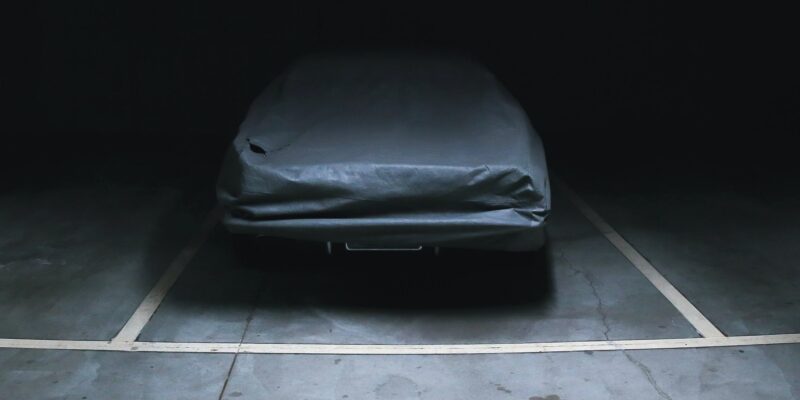
Perhaps you’ve moved to a city, plan to cycle to work, have a second car or simply won’t be using your car as regularly as you used to – and are wondering what to do to maintain it.
How often you need to put the engine on or check your tyre pressure always depends on how old your vehicle is, the condition of the car and how long you aren’t driving it for. With that said no matter how old the car is, if you leave it idle for weeks on end you stand the risk of the battery going flat, which means your car might not start.
So to avoid any of these problems, we’ve put together a checklist of things you can do to keep your car in tip-top shape for when you are ready to hit the road again.
Got a question about what to do with your car, or how often you need to start it up? Check out our FAQs section.
Checklist: Keeping Your Car in Driving Condition
To keep your car in working order it’s important you not only look after the working parts, but also check that it is road legal. This includes, tax, insurance and tyre tread - It’s not just as simple as making sure you have a charged battery.
Start your Car - Start the engine and leave it running for at least 15 minutes*. This helps give the battery a charge and the dashboard will highlight any warnings too. Never leave your car unattended when the engine is running.
*Running time recommendations vary depending on manufacturer. Consult your local your dealership for a professional advice.
MOT and Tax - It’s a legal requirement to have a valid MOT and road tax. If you plan to not have an MOT or pay road tax you must SORN your vehicle.
Tyre Tread and Pressure - Idle tyres may lose some pressure so make sure all tyres are at the correct tyre pressure levels. If you’re losing pressure at an unusual rate you could have a slow puncture, which you will want to fix before driving. Whilst you check the pressure make sure each tyre meets the minimum tyre tread levels so they are road legal too.
Fluid levels and Oil - Check all fluid levels before starting the engine. Giving your essential fluids a check is important for when you eventually drive your car again. Not having the correct brake fluid or enough oil in the car could do some serious damage if not kept topped up.
Handbrakes and brakes – To avoid your brakes seizing up you should move the car a short distance. Do this whilst you have the engine running too so you can maintain control over the vehicle.
FAQs: Maintaining Your Car When Not Driving It
How often should I turn on the engine?
Generally speaking, you should turn your engine on every week for at least 15 minutes. However, there is no hard or fast rule. Some cars may only be a few months or years old versus those that could be 20+ years. The main thing to consider is, the longer you leave the engine off the less likely it could turn back on again as quickly.
Will I still need insurance?
By law, you must have some form of insurance on a vehicle. The lowest form of insurance you can have is Third Party, which doesn’t offer as much protection. The only time you do not need to insure your vehicle is when your vehicle has been SORN.
Will I still need to tax my car?
In the same way as insurance, road tax must be valid on your vehicle. If you do not drive your vehicle on public roads or it’s in storage away from the roadside you can have the vehicle SORN to avoid paying road tax. However, this means you cannot drive the vehicle if being SORN and cannot park on the road. It must be kept on a private driveway or garage. Once you are ready to use your car, purchasing road tax for your vehicle will cancel any SORN.
Will rust build up?
Keeping it clean is still important, as a stationary vehicle. Unless kept inside a garage or sheltered location, it will still be susceptible to weather and pollution. Making time to care for your car with a regular clean is a good way to maintain the condition of your car’s bodywork. Clean and polish your car if you plan to store it away for any period of time so it’s in good nick before going into hibernation.
Similarly, do not let small dents or scratches fester, as leaving them exposed to the elements will encourage corrosion. Always repair car scratches with urgency to avoid further damage and a heftier bill for repair further down the road.
Stowing your car indoors is fine to do, but make sure there is ventilation as condensation can lead to erosion. If you are going to run the engine, pull it out onto the drive or open space, this is to avoid toxic fumes in confined spaces.
Should I have a full tank of fuel?
Contrary to popular belief. It is better to fill your tank up before you park up your car. This avoids any condensation building up in the fuel tank which could lead to damage further down the line.
How long can my electric car be left switched off?
Electric cars and hybrids also have 12-volt batteries just like conventional petrol and diesel cars. But the difference is they of course charge and use power differently. To keep your EV or hybrid well charged and ready for use start it up every week for at least 15 minutes. Your handbook will also provide more information on whether to keep the car plugged into the mains so be sure to check this as the advice will differ between manufacturer.
Will my tyres be safe to use afterwards?
Car pressure may deplete over a tyre, so check for low or flat tyres before setting off and make sure they are topped up with air before your next journey.
There are many reasons that our car may be off the road. No matter how long the car remains idle, using our tips and guidance above can be a handy way of ensuring your car is ready to hit the road again, just as it was before you parked it up.




